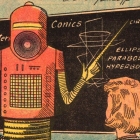-
 +18 +1
+18 +1CRISPR’d plant is resistant to the “cancer of rice”
Thanks to CRISPR, farmers may finally have a good defense against rice blast, a fungal disease so devastating, it’s known as the “cancer of rice.”
-
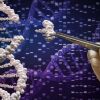 +23 +1
+23 +1Next-level CRISPR gene editing: No viruses required
Modified viruses have proven a handy way to get CRISPR/Cas9 gene editing materials into the nucleus of cells – but they're expensive, difficult to scale and potentially toxic. Now, researchers have found a non-viral approach that does the job better.
-
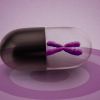 +26 +1
+26 +1Forget designer babies. Here’s how CRISPR is really changing lives
The gene-editing tool is being tested in people, and the first treatment could be approved this year.
-
 +23 +1
+23 +1Girl with deadly inherited condition is cured with gene therapy on NHS
A girl born with a rare and deadly genetic condition is expected to live a long and normal life after becoming the first person to be cured on the NHS with the help of a revolutionary gene therapy. Teddi Shaw was diagnosed with metachromatic leukodystrophy (MLD), an inherited condition that causes catastrophic damage to the nervous system and organs. Those affected usually die young.
-
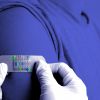 +15 +1
+15 +1Next up for CRISPR: Gene editing for the masses?
Last year, Verve Therapeutics started the first human trial of a CRISPR treatment that could benefit most people—a signal that gene editing may be ready to go mainstream.
-
 +13 +1
+13 +1Scientists Have Reached a Key Milestone in Learning How to Reverse Aging
The finding involves mice, but represents an important milestone in understanding what causes cells to age.
-
 +14 +1
+14 +1Experimental CRISPR technique has promise against aggressive leukaemia
A 13-year-old girl whose leukaemia had not responded to other treatments now has no detectable cancer cells after receiving a dose of immune cells that were genetically edited to attack the cancer.
-
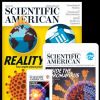 +18 +1
+18 +1In First, Scientists Use CRISPR for Personalized Cancer Treatment
The “most complicated therapy ever” tailors bespoke, genome-edited immune cells to attack tumors
-
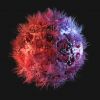 +1 +1
+1 +1A bold effort to cure HIV—using Crispr
Key is whether the gene-editing technology can stop the virus from replicating.
-
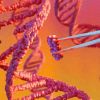 +22 +1
+22 +1Doctors Gene-Edit Patient's Liver to Make Less Cholesterol
A team of researchers from US biotech company Verve Therapeutics have injected a gene-editing serum into a live patient's liver with the goal of lowering their cholesterol, a watershed moment in the history of gene editing that could potentially save millions from cardiovascular disease and heart attacks, MIT Technology Review reports.
-
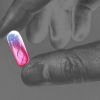 +17 +1
+17 +1The first CRISPR gene-editing drug is coming—possibly as soon as next year
Until recently, CRISPR—the gene-editing technology that won scientists Jennifer Doudna and Emmanuelle Charpentier the 2020 Nobel Prize in chemistry—sounded more like science fiction than medicine; lab-created molecular scissors are used to snip out problematic DNA sections in a patient’s cells to cure them of disease. But soon we could see regulators approve the very first treatment using this gene-editing technology in an effort to combat rare inherited blood disorders that affect millions across the globe.
-
 +14 +1
+14 +1New CRISPR-based map ties every human gene to its function
A new CRISPR-based map ties every human gene to its function using a tool called Perturb-seq. The work was led by Jonathan Weissman and colleagues at MIT and the Whitehead Institute, and is free for other scientists to use.
-
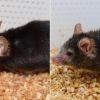 +4 +1
+4 +1The 'Benjamin Button' effect: Scientists can reverse aging in mice. The goal is to do the same for humans
In molecular biologist David Sinclair’s lab at Harvard Medical School, old mice are growing young again. Using proteins that can turn an adult cell into a stem cell, Sinclair and his team have reset aging cells in mice to earlier versions of themselves. In his team’s first breakthrough, published in late 2020, old mice with poor eyesight and damaged retinas could suddenly see again, with vision that at times rivaled their offspring’s.
-
 +3 +1
+3 +1Scientists accidentally made a vicious mutant attack hamster
In a recent study published in the scientific journal of Neuroscience, a group of scientists regale their journey to try and use CRISPR gene editing technology to bio-engineer an extra-friendly...
-
 +17 +1
+17 +1CRISPR tomatoes genetically engineered to be richer in vitamin D
Vitamin D deficiency is a growing health issue, but very few foods are rich in the nutrient. To help combat the problem, scientists have now used CRISPR gene editing to fortify tomatoes with vitamin D.
-
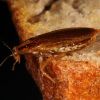 +27 +1
+27 +1Scientists Use Gene Editing to Create Mutant Cockroaches in Breakthrough
For the first time, scientists have edited the genes of cockroaches using CRISPR-Cas9, a technology that can target and change parts of an organism’s DNA, reports a new study. The breakthrough not only produced the first so-called “knockout cockroaches” in history, a term that refers to cockroaches with artificially inactivated genes, it could also dramatically simplify gene-editing in numerous other insects, opening up applications for pest control, evolutionary biology, and other entomological fields.
-
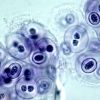 +24 +1
+24 +1CRISPR Creator Says We Could Engineer Species to Fight Climate Change
One of the inventors of CRISPR gene editing, a groundbreaking new method to engineer genetic code, believes we could use the same techniques to tackle some of the biggest issues facing humanity right now, including climate change.
-
 +20 +1
+20 +1Scientists Are Trying To Cheat Death, But Will They Succeed?
Currently, humanity’s risk of death doubles every eight years, but recent scientific developments may allow us to extend our record of most heartbeats per lifetime. Scientists and medical researchers have made some remarkable, and controversial, discoveries in anti-ageing experiments of late.
-
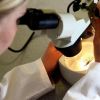 +4 +1
+4 +1New cancer treatment uses body’s cellular waste disposal to flag harmful proteins
Scientists are perfecting a new anti-cancer treatment that exploits the body’s own cellular waste disposal system. Some drugs are already producing promising results, and the number of new medicines is expected to rise in the near future with the opening of a British centre dedicated to using the technique.
-
 +12 +1
+12 +1A newly discovered molecule could lead to a cure for pancreatic cancer
It's the dreaded C-word: Cancer. Some dare not even say it in case it happens to them. Despite many advances in science, we are still at a loss for an effective cure for cancer. Now, a research team led by scientists at Roswell Park Comprehensive Cancer Center may have made a significant breakthrough in treating pancreatic cancer, according to a press release published by the institute on Wednesday.
Submit a link
Start a discussion


